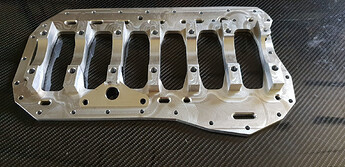So, I have a twin turbo Dodge Stealth (re-badged Mitsubishi 3000GT) that blew an engine last year.
After tearing into it I discovered that the previous owner botched the transmission swap.
Though possible and fairly straightforward, fixing it properly would cost far more then the car is worth, and I’d be left with a drive line I’m afraid to abuse.
I had the idea to build a destroked turbo LS for it, using a Nissan FS6R31A (6 speed good to 500ft-lb).
That would get me a cheap drive line I wasn’t afraid to abuse. But the LS is kind of boring, and the whole point of this car is to have fun.
This might be a stupid idea, but after seeing one cheap on kijiji I’m considering a high RPM twin turbo v12. I’ve already cheeked, and the engine bay has room.
I’m aiming for 6-800hp and an 8000rpm redline. I’m unsure if I can get the valvetrain to like anything more then ~7k, but it’s what I’ll strive for.
For that goal I will need to lighten the reciprocating mass, fix valve float, increase head flow, and reinforce the main bearing caps.
Fuel and ignition will be handled by a Megasquirt, I’ve built a few and it’s a cheap/easy and effective solution.
For now I’m going to leave the valvetrain design until after I get an engine to play with.
I have the facilities to do most of the machining, and I like tinkering more then the driving.
So parts costs are my main concern, not labour.
As suggested elsewhere in this forum, LS rods and Subaru pistons could be used.
Bore and hone liners for Subaru ej20 pistons (92mm bore 32.6mm compression height)
Drill/ream pistons to accept 4th gen 4.8l LS rods (159.4mm long)
192mm deck height, stock is 191.9mm
Grind V12 crank to accept LS rods and with a slight offset to bring the pistons to the correct height.
The only thing I should need a shop to do is grind the crank.
I read somewhere that the stock stock main caps are week and tend to flex. The fix for this is of course some sort of girdle. I can’t find a good example but possibly one like this:
But with how deep the crank sits in the block on the V12 I would design it to be flush with the bottom of the block.
So, any thoughts on my crazy idea?
Thanks.


